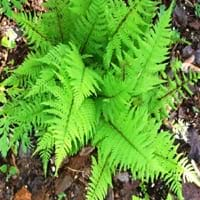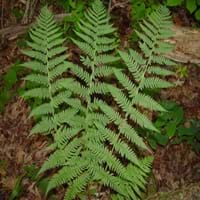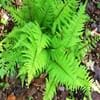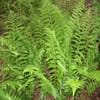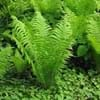Life Span
Perennial
Perennial
Origin
Northeastern United States, Mid-Atlantic United States, Southeastern United States, Central United States, Canada
Northeastern United States, Mid-Atlantic United States, North-Central United States, Central United States, Canada
Types
Not available
Not available
Habitat
Damp Places, open Woodlands, Rocky areas
Cliffs, Forests, Rocky areas, Slopes
USDA Hardiness Zone
3-8
3-8
Sunset Zone
Not Available
Not Available
Habit
Thicket/Colonizing
Clump-Forming
Flower Color
Non Flowering Plant
Non Flowering Plant
Flower Color Modifier
Bicolor
Not Available
Fruit Color
Non Flowering Plant
Non Fruiting Plant
Leaf Color in Spring
Light Green, Yellow green
Light Green, Gray Green
Leaf Color in Summer
Light Green, Yellow green
Blue Green, Dark Green
Leaf Color in Fall
Light Green, Yellow green, Bronze
Blue Green, Gray Green, Dark Green
Leaf Color in Winter
Not Available
Gray Green, Dark Green
Leaf Shape
Lanceolate
Compound
Plant Season
Spring, Summer, Fall
Spring, Summer, Fall, Winter
Sunlight
Full Shade, Partial shade
Full Shade, Partial shade
Type of Soil
Clay, Loam, Sand
Clay, Loam
The pH of Soil
Acidic
Acidic, Neutral
Soil Drainage
Average
Average
Bloom Time
Not Available
Not Available
Tolerances
Full Sun, Rabbit, Shade areas, Variety of soil types
Not Available
Where to Plant?
Ground
Ground
How to Plant?
Spores
Root Division, Spores
Plant Maintenance
Medium
Medium
Watering Requirements
Medium
Medium
In Summer
Lots of watering
Lots of watering
In Spring
Moderate
Moderate
In Winter
Average Water
Average Water
Soil pH
Acidic
Acidic, Neutral
Soil Type
Clay, Loam, Sand
Clay, Loam
Soil Drainage Capacity
Average
Average
Sun Exposure
Full Shade, Partial shade
Full Shade, Partial shade
Pruning
No pruning needed
Prune to stimulate growth, Remove damaged leaves, Remove dead branches, Remove dead leaves
Fertilizers
All-Purpose Liquid Fertilizer, No fertilizers needed
All-Purpose Liquid Fertilizer
Pests and Diseases
No serious insect or disease problems
Pests and diseases free, Red blotch
Plant Tolerance
Full Sun, Rabbit, Shade areas, Variety of soil types
Drought
Flower Petal Number
Single
Single
Foliage Texture
Fine
Medium
Foliage Sheen
Matte
Matte
Attracts
Wildlife
Not Available
Allergy
Not Available
Skin irritation, Skin rash
Aesthetic Uses
Cottage Garden, Showy Purposes
Borders, Hanging Basket, Mixed Border, Showy Purposes, Used as an interior landscaping species, Used for decorating walls, fences, gates, hedges, etc.
Beauty Benefits
Not Available
Not Available
Edible Uses
Not Available
No
Environmental Uses
Air purification, Used to establish native woodland, Wild areas
Air purification
Medicinal Uses
chills, Lung Problems
Not Available
Part of Plant Used
Leaves
Not Available
Other Uses
Grown for shade, Making Perfumes
Used as Ornamental plant, Used for Landscaping
Used As Indoor Plant
No
Yes
Used As Outdoor Plant
Yes
Yes
Garden Design
Container, Groundcover
Feature Plant, Groundcover, Mixed Border, Rock Garden, Wall
Botanical Name
DENNSTAEDTIA punctilobula
DRYOPTERIS marginalis
Common Name
Hayscented Fern
Marginal wood fern
In Hindi
Hayscented Fern
marginal wood fern
In German
Hayscented Fern
marginal Holz fern
In French
Hayscented Fern
marginal dryoptéride
In Spanish
Hayscented helecho
helecho de madera marginal
In Greek
Hayscented Fern
οριακή φτέρη ξύλο
In Portuguese
Hayscented Fern
samambaia de madeira marginal
In Polish
Hayscented Fern
marginalne drewna paproci
In Latin
Fern Hayscented
Fern marginalibus
Phylum
Pteridophyta
Tracheophyta
Class
Filicopsida
Filicopsida
Order
Polypodiales
Polypodiales
Family
Dennstaedtiaceae
Dryopteridaceae
Genus
Dennstaedtia
Dryopteris
Clade
Not Available
Not Available
Tribe
Not Available
Not Available
Subfamily
Not Available
Not Available
Number of Species
Not Available
Season and Care of Hayscented Fern and Marginal Wood Fern
Season and care of Hayscented Fern and Marginal Wood Fern is important to know. While considering everything about Hayscented Fern and Marginal Wood Fern Care, growing season is an essential factor. Hayscented Fern season is Spring, Summer and Fall and Marginal Wood Fern season is Spring, Summer and Fall. The type of soil for Hayscented Fern is Clay, Loam, Sand and for Marginal Wood Fern is Clay, Loam while the PH of soil for Hayscented Fern is Acidic and for Marginal Wood Fern is Acidic, Neutral.
Hayscented Fern and Marginal Wood Fern Physical Information
Hayscented Fern and Marginal Wood Fern physical information is very important for comparison. Hayscented Fern height is 38.10 cm and width 90.00 cm whereas Marginal Wood Fern height is 30.50 cm and width 90.50 cm. The color specification of Hayscented Fern and Marginal Wood Fern are as follows:
Hayscented Fern flower color: Non Flowering Plant
Hayscented Fern leaf color: Light Green and Yellow green
Marginal Wood Fern flower color: Non Flowering Plant
- Marginal Wood Fern leaf color: Light Green and Gray Green
Care of Hayscented Fern and Marginal Wood Fern
Care of Hayscented Fern and Marginal Wood Fern include pruning, fertilizers, watering etc. Hayscented Fern pruning is done No pruning needed and Marginal Wood Fern pruning is done Prune to stimulate growth, Remove damaged leaves, Remove dead branches and Remove dead leaves. In summer Hayscented Fern needs Lots of watering and in winter, it needs Average Water. Whereas, in summer Marginal Wood Fern needs Lots of watering and in winter, it needs Average Water.
